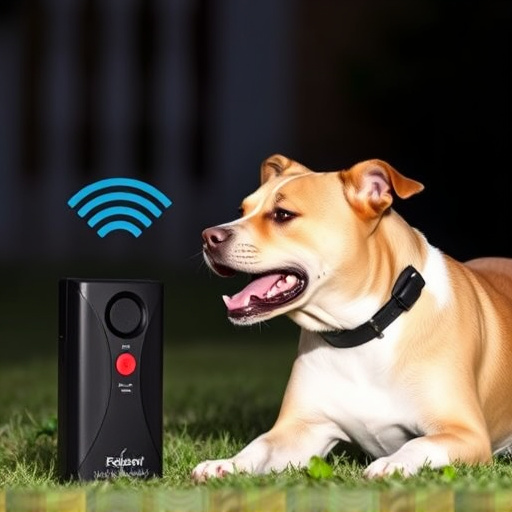Ultrasonic electronic dog deterrents (30-150 feet effective distance) safely discourage unwanted behaviors using inaudible sound waves, without physical punishment. For optimal results, match device to your dog's needs: consider distance, sensitivity, and layout. Keep devices out of reach, monitor reactions, and adjust settings as needed. Train dogs gradually in a calm environment for best effectiveness (3-5 meters range).
Discover the power of ultrasonic repellent gear for training your dog, a humane and effective approach to modifying behavior. This guide explores how electronic dog deterrents work, covering safety aspects crucial for responsible ownership. Learn to choose the perfect fit for your pet’s needs based on size, breed, and temperament. We’ll also provide step-by-step tips for optimal use and training, ensuring a successful journey towards good canine manners within an effective distance of 3-6 meters.
- Understanding Ultrasonic Repellents: How They Work and Safety Considerations
- Choosing the Right Electronic Dog Deterrent for Your Pup's Needs
- Effective Use and Training Tips for Optimal Results with Ultrasonic Gear
Understanding Ultrasonic Repellents: How They Work and Safety Considerations
Ultrasonic repelents are a popular and effective tool for dog training, offering an non-harmful way to deter unwanted behaviors. These devices emit high-frequency sound waves that are inaudible to humans but can be detected by dogs. When a dog approaches within the device’s effective distance, usually between 30 to 150 feet, depending on the model, the ultrasonic waves create an unpleasant sensation, encouraging the animal to move away and avoid the area. This technology is considered a safe and humane electronic dog deterrent, as it doesn’t involve physical punishment or shocks.
While ultrasonic repelents are generally harmless, it’s crucial to consider safety guidelines. These devices should be used responsibly, ensuring they’re out of reach of children and other pets. Additionally, not all dogs react in the same way; some may be more sensitive than others. Regular monitoring is essential to ensure the device functions as intended without causing any distress or discomfort to your pet. Always follow the manufacturer’s instructions for proper use, including setting the sensitivity levels appropriately for your dog’s size and behavior.
Choosing the Right Electronic Dog Deterrent for Your Pup's Needs
When selecting an electronic dog deterrent, understanding your pup’s specific needs and behavior is key. These devices use ultrasonic sounds or vibrations to deter dogs from unwanted actions like barking excessively or jumping on furniture. The effective distance of these repellents varies; some work within a few feet, while others can reach up to 100 feet or more. Picking the right one depends on your home’s layout and whether you have multiple dogs or specific behavior issues to address.
Consider factors like the device’s range, sensitivity settings, and additional features. For instance, some models offer adjustable frequency levels, allowing you to customize the sound based on your dog’s preferences. Waterproof designs are ideal for outdoor use, while compact, portable options provide flexibility for different rooms or situations. Always read product reviews and consult with a professional trainer to ensure the chosen deterrent aligns with your training goals and is safe for your canine companion.
Effective Use and Training Tips for Optimal Results with Ultrasonic Gear
When using ultrasonic gear as an electronic dog deterrent, understanding its effective distance is key to optimal results. These devices emit high-frequency sound waves that are typically inaudible to humans but can be irritating or even painful for dogs. For best effectiveness, keep the device at a close range—typically within 3–5 meters (10–15 feet) of your target area. This ensures the ultrasonic signals reach the dog consistently without causing any discomfort to nearby humans or other pets.
Training plays a significant role in the success of ultrasonic deterrents. Start by introducing the device in a calm environment, allowing your dog to get used to its presence and sound. Gradually increase the sensitivity level as your dog becomes more familiar with it. Positive reinforcement can also enhance learning; reward your dog when it shows signs of understanding or avoiding the area where the ultrasonic gear is activated. Regular practice will help reinforce the training and ensure that the deterrent remains effective over time.
When using ultrasonic repellent gear, consistent training is key to teaching your dog to respond effectively within the stated effective distance of an electronic dog deterrent. By combining this technology with positive reinforcement and patience, you can help your furry friend understand and respect their boundaries, ensuring a peaceful home environment for both of you. Remember, safety is paramount, so always follow manufacturer guidelines and consult a professional trainer if needed.
